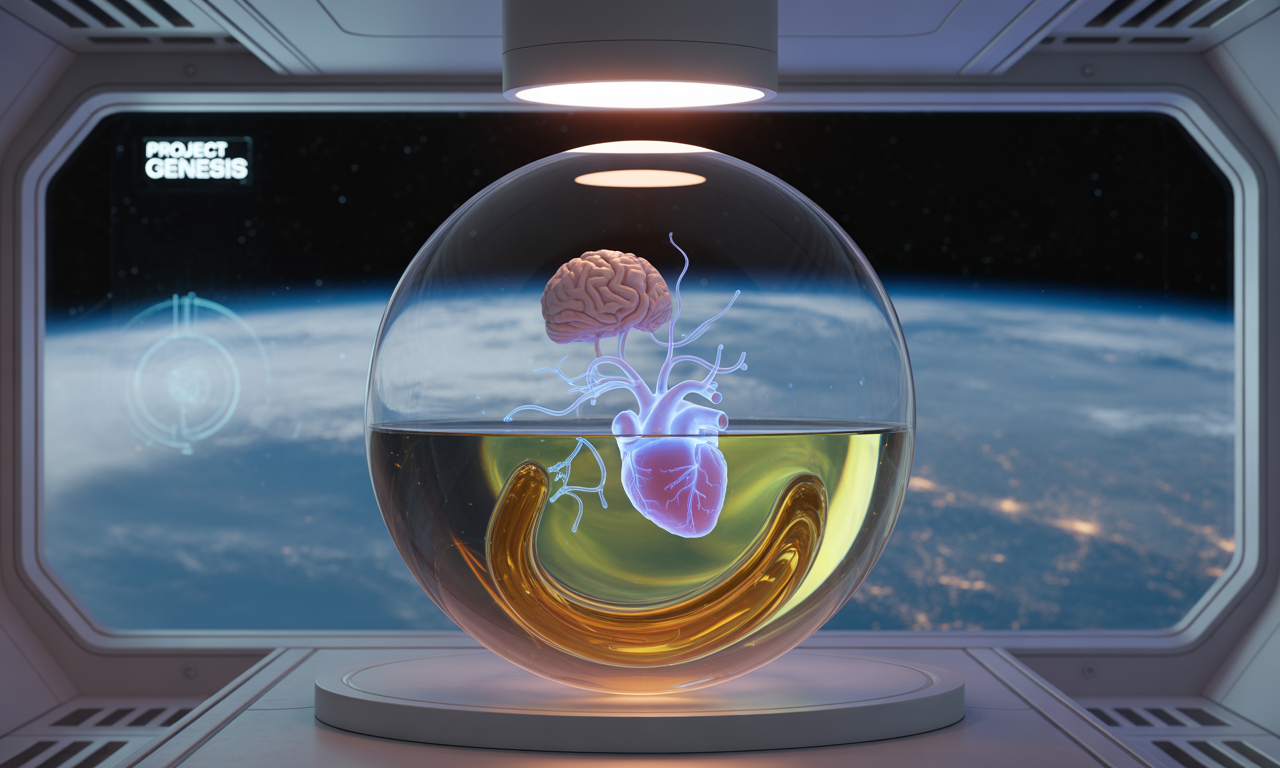🛰️ Mission Overview
A team led by Cedars-Sinai Medical Center is sending stem cells to the International Space Station to create the first heart and brain organoids grown in space. The launch is scheduled for 2:45 a.m. EDT Sunday on NASA’s 33rd commercial resupply mission. By leveraging microgravity, researchers aim to overcome Earth-bound limitations in organoid development and accelerate insights into diseases such as ALS, Parkinson’s, and cardiovascular disorders.
🔬 Why Microgravity Matters for Organoids
On Earth, gravity compresses organoids—tiny 3D clusters of cells—making it harder for them to maintain complex structures. In microgravity:
- Organoids can maintain spherical 3D architecture more naturally.
- They may develop more intricate organization, including vascular-like networks.
- Faster maturation and improved cellular differentiation have been observed in previous space experiments.
Organoids are typically under 1 mm and invisible to the naked eye, yet they mimic critical organ functions, enabling high-throughput disease modeling and drug testing.
🧊 How the Experiment Works
- Source cells: Frozen stem cells supplied by the Allen Institute.
- Transport: Cells ride in a specialized “plate habitat” engineered by BioServe Space Technologies.
- In-orbit handling: Astronauts will culture, feed, and image organoids for ~30 days aboard the ISS.
- Return and analysis: Samples will be sent back to Earth for size, morphology, genetic, and functional assessments.
This mission builds on Cedars-Sinai’s prior space research, including introducing DNA into stem cells and producing stem cells in orbit. It’s the institute’s sixth mission and the third funded through NASA’s In-Space Manufacturing Award in partnership with Axiom Space.
🧠 What Previous Space Studies Showed
- Brain organoids in microgravity matured faster than controls on Earth.
- Space-grown organoids showed decreased expression of proliferation genes and increased expression of maturation genes—markers of advanced development.
- Month-long space cultures remained healthy and developed more efficiently than expected, validating feasibility for extended biological experiments in orbit.
❤️🧠 Disease Areas Poised to Benefit
- Neurodegeneration: ALS, Parkinson’s, Huntington’s—brain organoids can model neuronal circuitry, protein aggregation, inflammation, and drug effects with improved fidelity.
- Cardiology: Heart organoids enable testing cardiotoxicity from cancer therapies, arrhythmia dynamics, and potential regenerative strategies.
- Regenerative medicine: Improved 3D organization could accelerate tissue engineering and organ bioprinting concepts.
- Space biomedicine: Understanding how human cells behave in microgravity informs astronaut health and Earth-based therapies alike.
🧭 What This Mission Could Deliver
- Higher-complexity organoids with better structural integrity.
- More physiologically relevant models for preclinical testing.
- Data to advance biomanufacturing in low Earth orbit (LEO), including tissue engineering and future organ fabrication concepts.
🔭 Future Vision
Researchers envision space-based labs operating in parallel with Earth labs to:
- Bioprint advanced tissues (heart, brain, muscle) uniquely possible in microgravity.
- Scale high-throughput organoid production for screening therapies.
- Develop next-gen “organ-on-chip” and organoid hybrids to study aging, inflammation, and disease at unprecedented resolution.
🧰 For Clinicians and Researchers
- Path to translation: Use space-optimized organoids to refine drug safety/efficacy profiles and reduce late-stage failures.
- Oncology–cardiology crossroads: Evaluate cardiac side effects of anti-cancer regimens on more realistic heart tissue models.
- Neuroscience: Model synaptic development, glial interactions, and neuroinflammation with higher complexity.
📺 Launch Details
- Vehicle: SpaceX Falcon 9
- Site: Kennedy Space Center, Florida
- Coverage: Live from 2:25 a.m. EDT on NASA+ and partner platforms
- Liftoff: 2:45 a.m. EDT (scheduled)
❓ Suggested FAQ
- What are organoids?
Mini 3D clusters of human cells that mimic organ functions, used for disease modeling and drug testing. - Why grow organoids in space?
Microgravity reduces compression and may enable more complex, physiologically relevant structures than on Earth. - Which diseases could this help?
ALS, Parkinson’s, heart disease, and treatment-related toxicities—areas where better human models are urgently needed. - How long will organoids stay in space?
Approximately one month on the ISS before returning for comprehensive analysis. - Who is involved?
Cedars-Sinai leads the experiment with contributions from the Allen Institute, BioServe, Axiom Space, SpaceX, and NASA.
🏢 About DNA Labs India
DNA Labs India develops evidence-based content and supports translational research with advanced molecular testing, pathway profiling, and biobanking guidance. For collaborations on organoid models, space biomedicine content, or clinical education, connect with our team.



